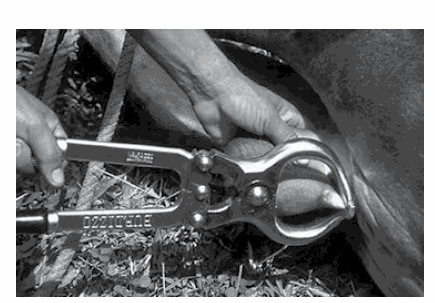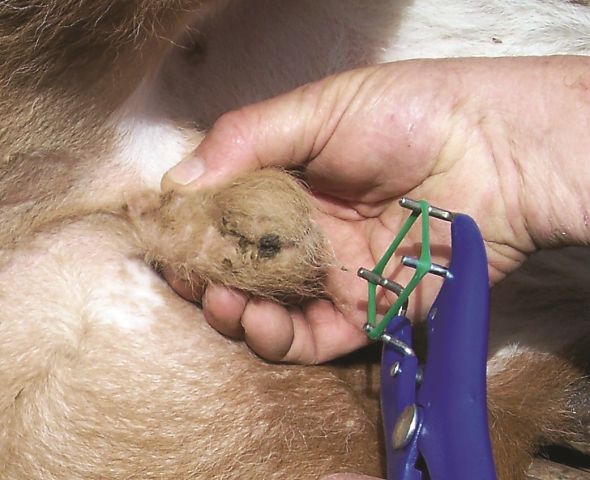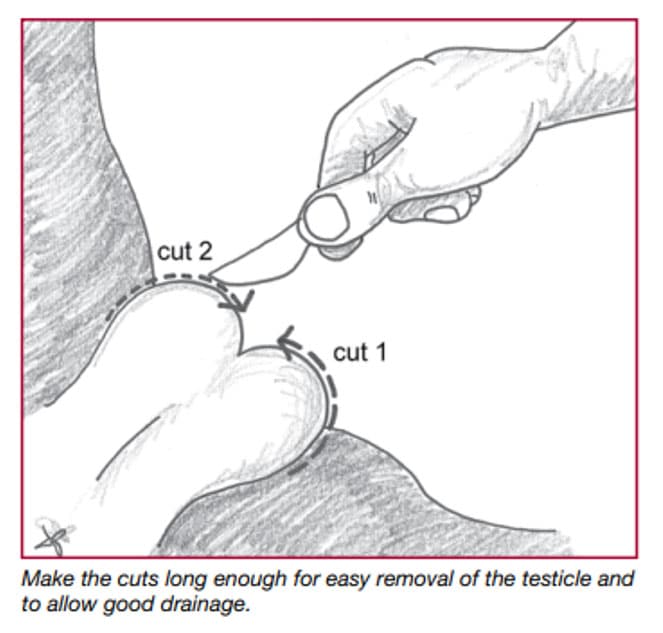Castration
- Surplus males are castrated to check indiscriminate mating, to make the males more docile and to make mutton of superior quality.
- Castration is usually done by using a castrating knife, Burdizzo castrator/emasculatome or elastrator.
- Burdizzo/emasculatome method:
- Secure the lamb and place it on its rumps with tail placed along the floor.
- Manipulate the testes and slightly pull out the scrotum.
- Hold the spermatic cords tightly on both sides making sure that it does not slip.
- Apply tincture iodine at the site.
- Place the jaws of the emasculatome over the spermatic cords and press the handles completely; hold for a few moments before releasing.
- Repeat the process about 1 cm below the first crush.
- Apply additional antiseptic and watch the animal for infection for a few days.
Precautions :
- The emasculatome must be clean and disinfected, and its jaws must be clean and smooth.
- The testes must be protected from injury.
- The scrotal skin folds must not be crushed.

- Elastrator method
- As this method is bloodless and painless, it is the most preferred.
- Secure the lamb and make it lie down on one side.
- Place the rubber ring with the help of the elastrator over the spermatic cord, a little above the testes.
- The constant pressure shuts off the blood supply to the testes and causes testicular atrophy and sloughing off in about 2-3 weeks.

- Incision method
- Secure the lamb on a clean floor and make it lie down on one side.
- Disinfect the surgical site and make an incision on the lower side of the scrotum with a sharp knife.
- Remove the testes and as much of the spermatic cord as possible.
- Disinfect thoroughly and take adequate post-operative care.
